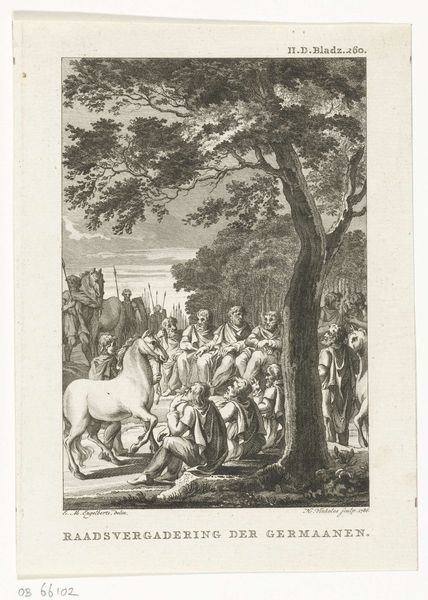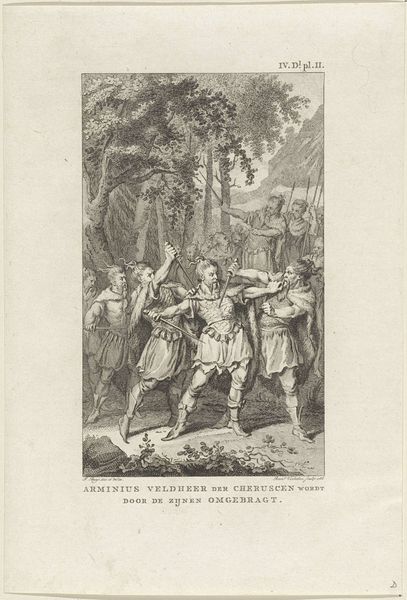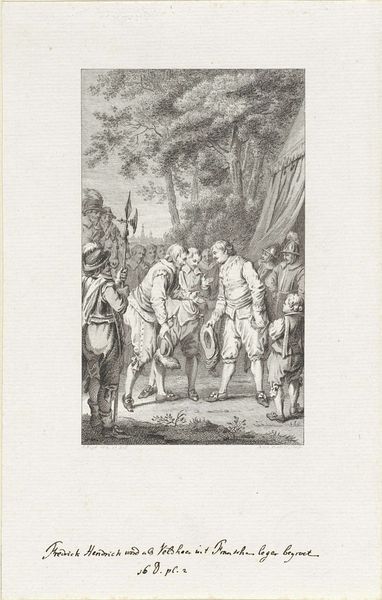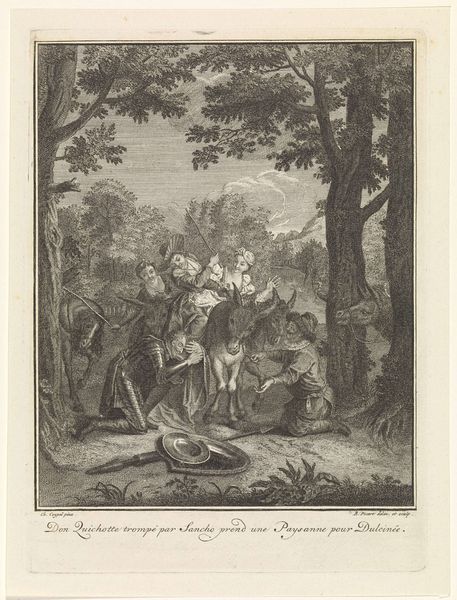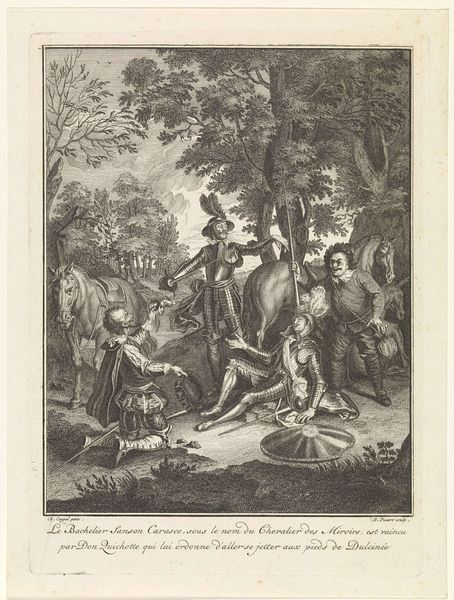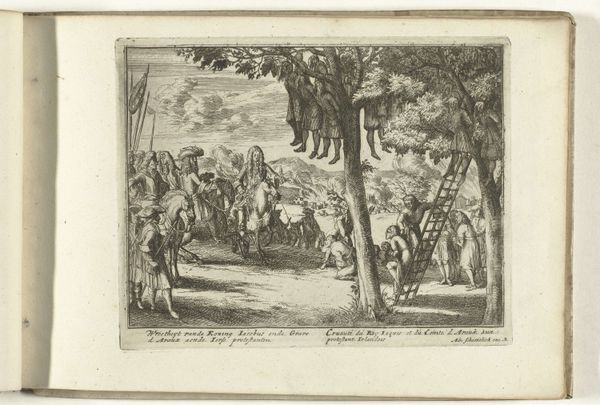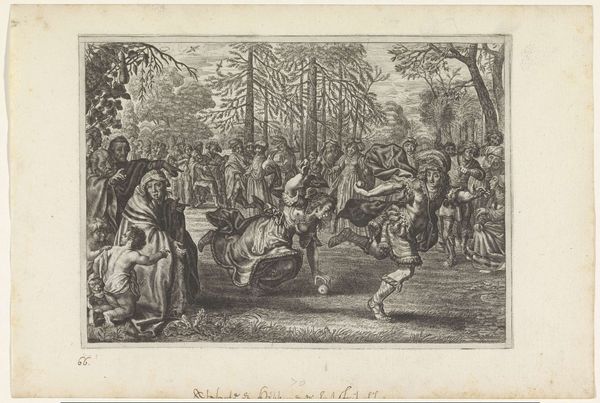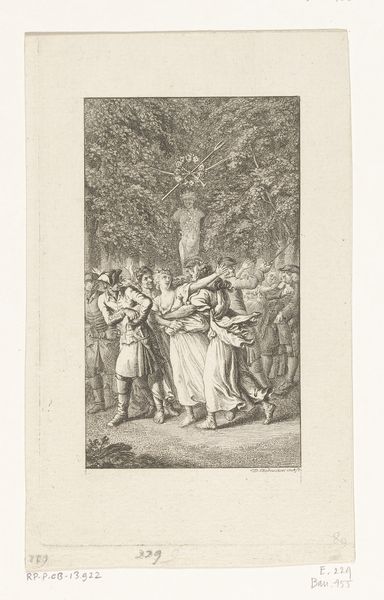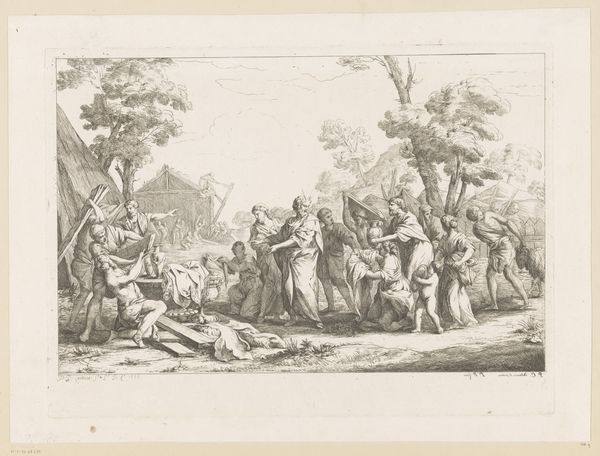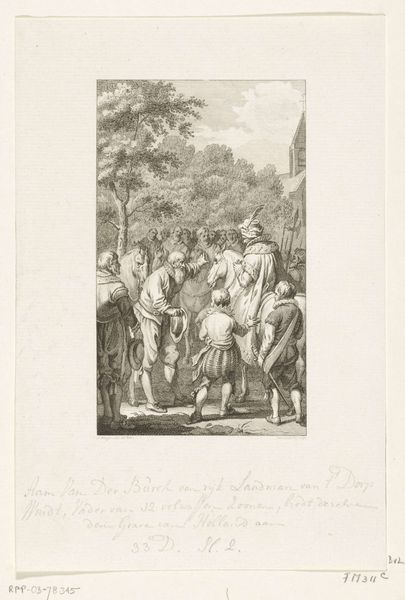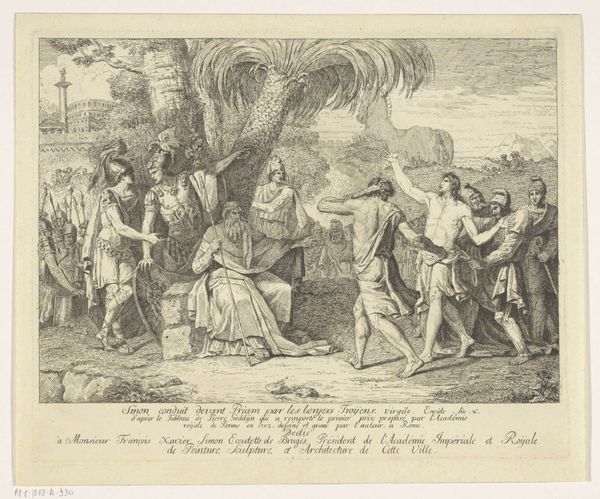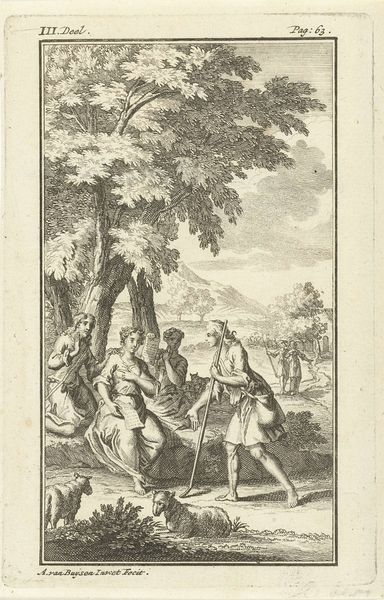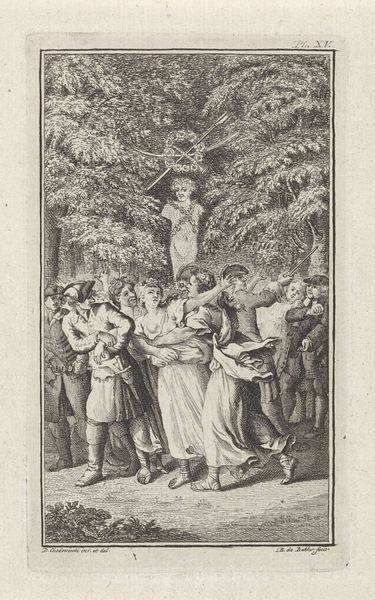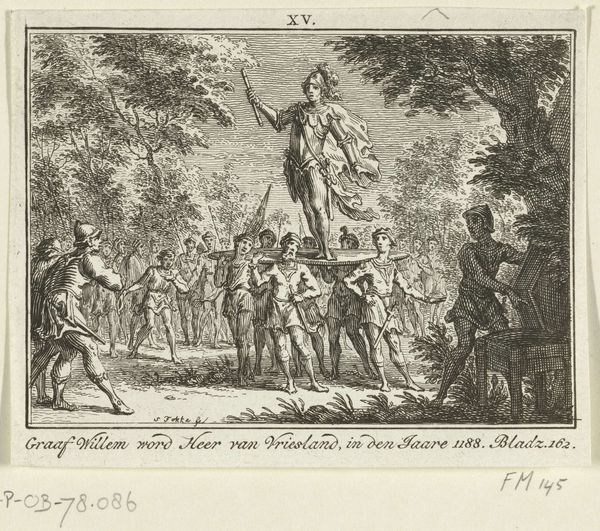
print, engraving
#
baroque
# print
#
old engraving style
#
history-painting
#
engraving
Dimensions: height 123 mm, width 78 mm
Copyright: Rijks Museum: Open Domain
Curator: Looking at this engraving, I’m struck by the light playing across the figures; a somber affair is depicted here. Editor: Indeed, a world steeped in moral ambiguity and, dare I say, subtle rebellion? What we have here is "King Dagobert Before Bishop Amandus," a print dating back to 1714. The piece is rendered with exquisite detail, showcasing a tense encounter in what looks to be an outdoor setting. Curator: What a severe, elongated figure of a bishop! Almost godlike! But then you look to the right, at the King’s entourage: what are they whispering? Clearly not thrilled about this meeting...I wonder about the narrative possibilities hinted at in the subjects' expressions. What do you think it tells us about power at the time? Editor: This image offers a glimpse into the dynamics between secular and religious authority in the 8th century – Dagobert I, a Merovingian king, and Amandus, the Bishop. It's tempting to assume it idealizes clerical power, yet the body language suggests resistance and unspoken challenges. Power never exists in a vacuum. I wonder about the historical accounts; how accurate or romanticized might they be? Curator: There is something delicious, subversive even, about seeing an apparent power struggle depicted so openly. Like a theatrical play enacted in shades of black and white, there is movement! Did the artist choose this tense scene on purpose, I wonder, and perhaps the ‘real’ power at that time lay with those closest to the throne! I want to delve deeper to understand how contemporary audiences might interpret this standoff. Editor: Context is everything. The work resonates even today as a visual treatise on historical injustices, or the ways the wealthy maintain social position. In a culture of stark inequality, perhaps we’re primed to find stories of the powerful held accountable profoundly affecting. I think this engraving transcends mere history; it feels strikingly relevant today. Curator: That’s really thought-provoking and beautifully expressed! I came looking for beautiful lines but found I'm going away with something very human to ponder! Editor: Well, isn't that what art does best: gives a face and name to history, while inviting viewers to ask hard questions.
Comments
No comments
Be the first to comment and join the conversation on the ultimate creative platform.
